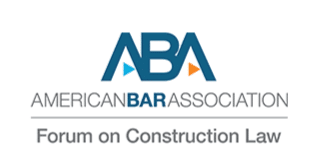As anyone involved in construction knows, one of the most heavily used forms for tracking insurance information during the subcontracting phase of a project is the Acord Certificate of Liability Insurance. General contractors often require subcontractors to provide these ubiquitous forms as evidence that the subcontractor maintains adequate insurance or insurance which complies with the requirements of the subcontract. Unfortunately, experience has shown that the Acord forms being used today are insufficient sources of the information needed by the developer and general contractor.
Historically, developers and GCs would require Acord forms to ensure that a subcontractor had a CGL insurance policy, with sufficient limits, and which named them as additional insureds. More recently, developers and GCs took the additional step of requiring a confirmation on the Acord forms that they were named as additional insureds for both ongoing and completed operations. This is important because coverage for ongoing operations only provides coverage during the construction process. Once the homes are put to their intended use, developers and GCs must be named as additional insureds for completed operations also in order to avail themselves of the benefits of the policy. Unfortunately, this is where the evolution of the use of the Acord forms ended, resulting in a failure to provide sufficient information to protect developers and GCs from the unknown.
My firm has had a rash of recent experience where our clients have not obtained the benefit of additional insured coverage for which they bargained because they relied on Acord forms which failed to provide sufficient information to allow them to protect themselves from insufficient insurance coverage on the part of the subcontractors with which they did business. For example, in one recent case a homeowners association alleged insufficient grading and drainage away from the homes within a development built by one of our clients. In reviewing the insurance information from the construction files, we found the Acord forms from the excavating company that performed all of the grading work around the homes. To our delight, the Acord form listed our client as an additional insured for both ongoing and completed operations. We timely tendered our client’s defense to the excavating subcontractor’s carrier as an additional insured, only to have our client’s defense declined because the excavating subcontractor had an earth movement exclusion on its policy. This exclusion was not disclosed on the Acord form provided.
Unfortunately, information related to exclusions or endorsements are rarely included on Acord forms even though they can have a very negative impact on the insurance a developer or GC thought it was obtaining through its subcontractors. We have seen other examples where carriers have denied tenders of defense and indemnity because of unknown exclusions in policies, such as a roofer that had a residential exclusion, an EIFS installer that had EIFS and mold exclusions, and a framing subcontractor that had a construction defect exclusion.
In order to protect our clients from the unknown, we recommend that in addition to requiring and maintaining Acord forms from their subcontractors, they require their subcontractors’ insurance agents to complete, sign, and return subcontractor insurance compliance forms. These forms have been developed to get additional information regarding the pertinent exclusions and endorsements on the subcontractors’ insurance policies and to ensure that developers and GCs know, for example, whether their excavating subcontractor has an earth movement exclusion. In addition to the benefit of being able to make sure subcontractors have adequate insurance coverage for the work they are performing, use of these forms also provides an additional source of recovery if it is later discovered that the insurance agent misrepresented the subcontractor’s insurance coverage. If it did, and there is no insurance available to cover a risk, there is a claim against the insurance agent for negligent misrepresentation, which may be covered by his or her errors and omissions policy.
Having never been responsible for obtaining and maintaining Acord insurance forms myself, I can only imagine what a Herculean task it must be to keep track of them for every project, through the statute of repose. (Someone is doing this at your company, right? If not, someone should.) Unfortunately, the use of subcontractor insurance compliance forms only increases the work required to track insurance, and for that I apologize. Based on experience, though, the effort is worth the reward. Not only will your subcontractors have the insurance needed to protect them, and you, from the risk of a construction defect claim down the road, you will avoid having any unwelcomed surprised in the event such a claim arises.
– David M. McLain is a founding member of Higgins, Hopkins, McLain & Roswell, LLC, a firm highly regarded for its expertise in construction law and the litigation of construction claims. HHMR represents a wide variety of clients, from individuals to small businesses to Fortune 500 companies. For additional information regarding the Acord Insurance Forms, you can reach David McLain by e-mail at mclain@hhmrlaw.comor by telephone at (303) 987-9813.








